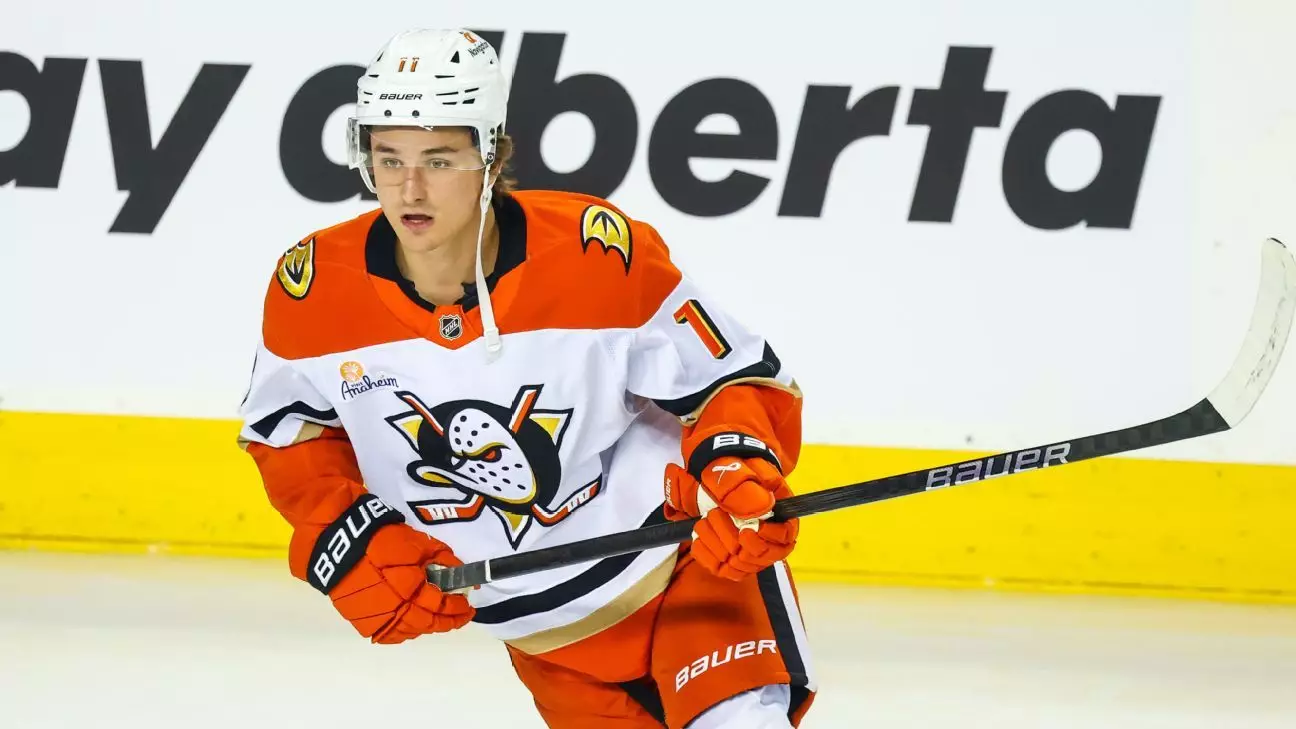On Monday, the NHL landscape experienced a seismic transaction: the Anaheim Ducks traded forward Trevor Zegras to the Philadelphia Flyers. This high-profile move had long been theorized among hockey pundits, but it still managed to capture attention due to its potential implications for both franchises. In exchange, the Ducks received Ryan Poehling, a 2025 second-round pick that originally belonged to the Columbus Blue Jackets, along with a 2026 fourth-round selection. This trade is a defining moment for both teams, raising critical questions around potential, value, and the dynamics of professional hockey rosters.
The Cost of Potential
As analysis of this deal unfolds, it is evident that the recurrent term surrounding it is “potential.” The Flyers are banking on Zegras fulfilling the promise he exhibited earlier in his career. At just 24, Zegras has tantalizing stats—he’s a two-time 20-goal scorer with two consecutive 60-point seasons to his name. With Philadelphia finishing dead last in goal production last season, adding a player like Zegras can significantly improve their offensive strategy. His presence could provide the Flyers with not only another competent top-nine center but the possibility of evolving into their go-to playmaker.
However, it is essential to recognize that potential comes with a level of unpredictability. Zegras’ recent seasons were marred by injuries and inconsistency, casting doubt on whether he can reclaim his prior form. While newfound linemates like Tyson Foerster and Travis Konecny may offer the support he needs to thrive, the question remains: will he become the player that fans once believed he would?
The Flyers’ Long-Term Strategy
Zegras’s addition appears to align beautifully with the Flyers’ ambitious long-term plans. The team’s young core, with an average age of 26, welcomes players primed for development alongside Zegras. Every facet of his skill set suggests a supportive role for young talents like Matvei Michkov, enhancing the likelihood that all involved players can flourish, creating a cohesive, high-scoring team.
What is particularly intriguing about this acquisition is Zegras’ contract status. As he enters the final season of a three-year, $5.75 million deal, the Flyers have secured a player who could be retained on favorable terms for the next couple of seasons. With $15 million in cap space still available post-trade, the Flyers are in a solid position to explore further enhancements without immediate financial strain.
An Exodus in Anaheim
For the Anaheim Ducks, this trade represents more than just the departure of a high-profile player; it signifies a strategic pivot towards building a robust foundation for the future. With emerging talents like Leo Carlsson, the No. 2 overall pick from the 2023 draft, and Mason McTavish leading the way, the Ducks have cultivated a promising pipeline of talent. Last season, Carlsson showcased his ability to handle a top-line role, while McTavish has already ascended to be a vital part of their roster. Given the success of these two, Zegras became a trading chip rather than an essential asset.
Transitioning away from Zegras frees up cap space, which is critical as the Ducks navigate the offseason. With approximately $36 million in projected cap space, the Ducks have room to negotiate contracts for their valuable restricted free agents like Lukas Dostal and Drew Helleson. These players represent the future, and ducking under old commitments facilitates a more flexible, aggressive approach to free agency.
Financial and Tactical Considerations
The trade also had to be assessed from a financial perspective, particularly the Ducks’ willingness to let Zegras go for Poehling, a role player who netted 12 goals last season with a much lower contract value. The commitment to Poehling will relieve some immediate financial pressure while allowing the Ducks to focus funds on other critical aspects of their roster. By shifting to a more balanced financial model, Anaheim ensures it can engage intelligently with the evolving marketplace as free agency looms.
Moreover, the Ducks’ front office seems poised to make robust decisions moving forward. Rather than focusing solely on individual marquee players, they appear committed to developing a well-rounded, dynamic roster that can compete effectively in the coming years. The trade of Zegras not only signals a shift in philosophy but also embodies a strategic liquidity, allowing the Ducks to explore various avenues for improvement.
Ultimately, the trade between the Ducks and Flyers is fascinating because it delicately balances expectations, tactics, and long-term vision. While Zegras may find himself under the spotlight in Philadelphia, his departure opens doors for Anaheim in unexpected ways, compelling us to observe how each franchise evolves post-trade. This move could be a turning point, one that reshapes the identity and future trajectory of both teams in the unforgiving landscape of the NHL.

